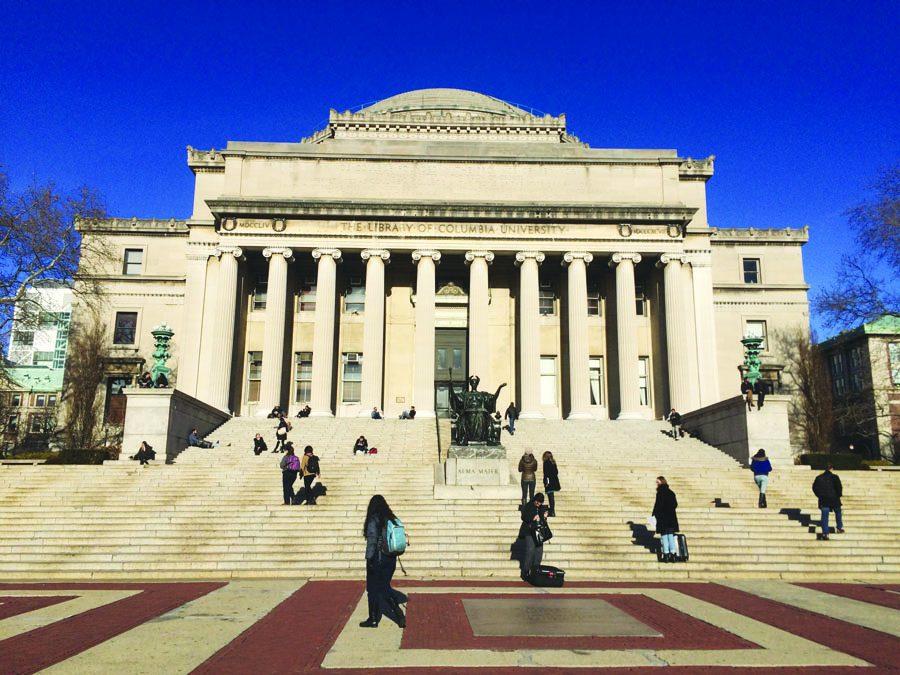Higher education comes with a high price
Students panic over affording overpriced colleges
The main library at Columbia University in New York.
With high school coming to an end, seniors are stressing over which college to choose. Several factors influence their decisions such as distance and majors. However, the main factor teenagers need to take into consideration is affordability.
Although it essentially depends on family income, the price to enter college is often an immense, unmanageable amount.
Not being able to consider a college because of its high cost can be heartbreaking for a student. A student may be accepted into their dream school but knowing that they cannot bear the expense of it can crush them during this heavy-stress time.
Because so many teenagers have trouble choosing the college that is perfect for them, when they find a place that suits all their desires it is a great relief. The feeling of finally finding a place they are able to call their second home brings great confidence to the student about their future in college.
Given this, after searching for the tuition price, how would it feel to realize they have to eliminate that option and forget about having an education there?
Tuition at a private university is now approximately three times as expensive as it was in 1974, costing an average of $31,000. Public tuition, at $9,000 has risen by nearly four times.
According to the Pew Research Center, a nationwide study reports that 57 percent of expected students believe that “a college degree no longer carries a value worth the cost.” Also, 75 percent of the respondents proclaimed college simply unaffordable.
As money is an issue for many families, students being to depend on scholarships for a chance to be able to go to a certain school. When applying, many colleges automatically offer scholarships based on the student’s family income.
Some provide them based off of how well a student is doing in school. There are even some random ones that could be found that include whether someone wears glasses or whether they are left or right handed.
What becomes a problem is when a student’s family income is too high for financial aid. Even so, some families who happen to have incomes that do not qualify them for certain scholarships still have trouble affording the excessive college tuitions.
For example, Georgetown University in Washington D.C. does not have merit-based scholarships, leaving the only aid available as the ones that depend on how much money a student’s family makes. For the average American household that gets little to no financial aid, higher education is frankly out of the question.
“Education is not really guaranteed but it’s one of the essential things you need to just make yourself a living,” junior Bitania Endalkachew said. “I think college should at least be affordable enough to not have to pay off loans for the rest of your life once you go.”
Another option when it comes to money while applying is to consider a pathways program at a community college. This means spending two years in one and then automatically being transferred to a four year university if the student desires completing the four years of education. Community colleges can be a great, cost-effective idea.
Many students have gone to NOVA after attending high school for the benefit of saving money.
The price that needs to be paid in order to go to college is outrageously high. This leads to students getting rid of some of their choices, searching for as many scholarships that they can qualify for, and putting into thought the possibility of a community college.

Senior Judy Nanaw is the Health Editor for the A-Blast and this is her second year on staff. Before this year, her position was a staff writer. She is...

Senior Sadie Modica has been on the A-Blast staff for three years. In addition to her responsibilities as Co-Editor-in-Chief, Sadie is an IB Diploma candidate...





